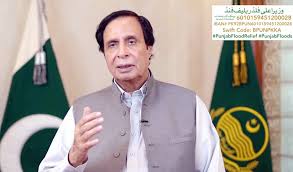Punjab’s launch of Air Punjab and a bullet train reflects development focused on central Punjab, sparking backlash from smaller provinces over ignored demands, resource inequity, and deepening power imbalances

On April 26, 2025, Punjab’s Information Minister in a press conference announced the launch of Air Punjab and a bullet train from Lahore to Rawalpindi. Already, the metro train in Lahore is functioning and billions of rupees to construct new roads and motorways in Punjab reflect how Pakistan’s largest province which contributes 35% of federal taxes, is spending 60% of its resources on modernising its infrastructure. Earlier, the Council of Common Interest (CCI) in its meeting held the other days decided to freeze the construction of six canal projects on river Sutlej when Sindh rose to revolt and PPP decided to withdraw its support to the PML-led government in Islamabad.
MQM Chief Altaf Hussain in a public meeting held in Nishtar Park Karachi in August 1986 had termed Pakistan International Airlines (PIA) as Punjab International Airlines which reflected anti-Punjab sentiments in small provinces. Now, PIA which is financially bankrupt is being replaced by Air Punjab, the first provincial airline of Pakistan.
Since the long division of Punjab into three provinces is being demanded the monopoly of central Punjab in the power apparatus of Pakistan namely military and bureaucracy is broken, and small provinces like Baluchistan, KPK, and Sindh also get their due share in resources. When Islamabad was made the federal capital of Pakistan in 1960, criticism from East Pakistan and other provinces was made that the decision was meant to benefit Punjab and GHQ located in Rawalpindi. After the disintegration of Pakistan in 1971, Punjab which emerged as the most populous province of Pakistan, entrenched its control over power. Now, 54 years down the road, the elite of Punjab which mostly represents central Punjab, has not learned lessons from the past and continues to drain resources of Pakistan to benefit a particular part of the province.
Karachi contributes 65% of federal revenue but its share in development is hardly 10%. Before 1971, East Pakistan was contributing more than 50% of federal revenue but was getting hardly 20% of the share despite its demographic majority in united Pakistan. When the interests of Punjab are protected by the federal planning commission, finance ministry, and other organs of bureaucracy, the outcome is central Punjab-centric PML (N) federal government to spend billions of rupees on infrastructure projects like motorways, metro buses, metro train, bullet train and now Air Punjab. Such Punjab-centric projects are bound to deepen the sense of deprivation in smaller provinces of Pakistan particularly Baluchistan.
PIA’s ‘Profit’ Mirage: Debt, Drama, And Dubious Accounting Practices
This country cannot afford such luxuries when 25 million children are out of school; below the poverty level is 40%; domestic and foreign debt is 300 billion dollars and the quality of life of ordinary people is pathetic
There is nothing wrong if Air Punjab is launched but it would have been better had some perturbing issues been settled like the division of Punjab into three provinces; removing power asymmetry between Punjab and other provinces and fair distribution of resources between Punjab and smaller provinces. As far as the division of Punjab is concerned the demand for Seraiki and Bahawalpur provinces along with creating northern Punjab as a separate province is quite old. During the PTI regime, steps were taken to establish the province of southern Punjab consisting of the Seraiki belt and Bahawalpur regions. But with the passage of a vote of no-confidence against the PTI government and its replacement with PML (N) led coalition government in April 2022 the momentum to divide Punjab was gone. After the February 2024 elections, the PMN (N) government in Punjab did nothing to complete the project of establishing the province of southern Punjab because it was against breaking the monopoly of Central Punjab in the provincial power structure.
As long as power is controlled by the bureaucratic, military, business, feudal, and political elites of Punjab, the sense of deprivation among smaller provinces will further augment. Exclusive, instead of inclusive development which favors a particular region of Punjab is counterproductive. When key positions of power like the Prime Minister, Chief of Army Staff, speaker of the national assembly, chairman senate, and other organs of power are held by those belonging to Punjab, smaller provinces will continue to resent the manner in which their rights are usurped.
Projects like Air Punjab and the Lahore-Rawalpindi bullet train reflect the wrong priorities of the Punjab government and Islamabad as the focus should be on an inclusive and not exclusive development. Already, there is ethnic and class stratification, and consuming billions of rupees to launch Air Punjab and Lahore-Rawalpindi bullet train will be counter-productive. Already Punjab is blamed for exploiting the resources of smaller provinces particularly Baluchistan. Sindh is accusing Punjab of stealing its water. Baluchistan and KPK are bitter that why the Punjab-dominated federal government wants to control their mineral resources.
Empowering Women In Education: Bridging Leadership Gaps To Transform Girls’ Education In Punjab
One needs to examine Punjab-centric projects like Air Punjab and Lahore-Rawalpindi bullet train from three angles. First, the mindset of the Punjabi elite which is accused since 1947 till today of exploiting other provinces. East Pakistan resented Punjab’s monopoly over power structure because of its edge over the military and bureaucracy. Punjab was blamed for not accepting the results of the December 1970 general elections which ultimately led to the breakup of the country and the emergence of Bangladesh. Unless Punjab changes its behavior and is fair with other provinces, one cannot expect resentment and a sense of deprivation to mitigate.
Second, when Pakistan is facing an economic crunch and political schism along with environmental, energy, and water crises, extremism, and terrorism, what is the need to launch Air Punjab with public money? An airline like Air Sial launched by businessmen from Sialkot was fine but when PIA is in shambles instead of focusing on bettering the national carrier, why a provincial airline like Air Punjab at the expense of tax payer’s money is launched? The same is the case with the project of the Lahore-Rawalpindi bullet train. Instead of modernising Pakistan railways why public money will be used to launch the Lahore-Rawalpindi bullet train? This country cannot afford such luxuries when 25 million children are out of school; below the poverty level is 40%; domestic and foreign debt is 300 billion dollars and the quality of life of ordinary people is pathetic. When the state is unable to provide clean and safe drinking water, good quality education, housing, and public transport, how can trillions of rupees be spent on launching the Air Punjab and Lahore-Rawalpindi bullet train? Inclusive, instead of exclusive development which benefits a couple of million people of a particular region of Punjab is the only way out to rid Pakistan of colossal economic, political, environmental, energy, water, and governance issues.
The Bank of Punjab Reports Record Profitability & Highest-Ever Cash Dividend
Finally, the role of the state is critical in ensuring inclusive development because if central Punjab continues to hold power at the expense of other provinces, the outcome will be damaging to the federal structure of Pakistan. Already, there is enough resentment against Punjab in smaller provinces, particularly in Baluchistan and projects like Air Punjab and the Lahore-Rawalpindi bullet train along with other projects of modernising infrastructure, will be at the expense of the unity and integrity of Pakistan.
Punjab is relatively prosperous than other provinces of Pakistan but it is the elite of central Punjab that also exploits the people of their province. PML (N) is not a national party and is only confined to central Punjab and that too is controversial because of alleged massive rigging in the February 2024 general elections which brought that party to power after denying PTI its legitimate electoral victory. PML (N) has a history of using the ‘Punjab card’ and it knows that its hold over power in Punjab and in Islamabad is perhaps the last opportunity to launch projects that will benefit mostly central Punjab.
DATE . May/4/2025


